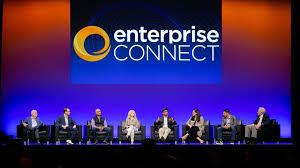What is speech recognition and how does it work?

Time to read: 5 minutes
What is speech recognition and how does it work?
The human voice is a powerful tool for conveying thoughts, emotions, and ideas. While speech has historically been a human trait distinct from machines, the landscape is shifting. Traditionally, our interactions with computers were limited to devices like keyboards and consoles. However, today's advancements in speech recognition software have revolutionized this interaction, enabling seamless communication between people and technology.
Speech recognition technology can be a game-changer for businesses. It can help streamline operations and improve customer experiences with ease. For example, imagine a customer support system that instantly understands and processes customer inquiries without the need for typing. Or an automatic transcription of meetings that can be distributed to everyone who couldn’t attend. Or real-time translations. There are many possibilities, which we’ll discuss below.
In short, speech recognition technology equips businesses with tools to operate more efficiently and engage more effectively, turning spoken words into actionable insights.
What is speech recognition technology?
Speech recognition is the technology that enables computers and devices to understand and process human speech. It involves converting spoken language into text or commands that a computer can understand and act upon. This technology captures audio input, analyzes the sounds, and matches them to words or phrases in its database to produce an accurate interpretation.
Speech recognition is used in various applications, such as virtual assistants (like Siri, Alexa, or Google Assistant), customer service bots, transcription services, and more. Its ability to facilitate hands-free interaction with technology not only enhances user convenience but also makes tech more accessible to individuals with physical limitations or those in environments where using hands isn't feasible.
How does speech recognition work?
Speech recognition technologies capture the human voice with physical devices like receivers or microphones. The hardware digitizes recorded sound vibrations into electrical signals. Then, the software attempts to identify sounds and phonemes—the smallest unit of speech—from the signals and match these sounds to corresponding text. Depending on the application, this text displays on the screen or triggers a directive—like when you ask your smart speaker to play a specific song and it does.
Background noise, accents, slang, and cross talk can interfere with speech recognition, but advancements in artificial intelligence (AI) and machine learning technologies filter through these anomalies to increase precision and performance.
Thanks to new and emerging machine learning algorithms, speech recognition offers advanced capabilities:
Natural language processing is a branch of computer science that uses AI to emulate how humans engage in and understand speech and text-based interactions.
Hidden Markov Models (HMM) are statistical models that assign text labels to units of speech—like words, syllables, and sentences—in a sequence. Labels map to the provided input to determine the correct label or text sequence.
N-grams are language models that assign probabilities to sentences or phrases to improve speech recognition accuracy. These contain sequences of words and use prior sequences of the same words to understand or predict new words and phrases. These calculations improve the predictions of sentence automatic completion systems, spell-check results, and even grammar checks.
Neural networks consist of node layers that together emulate the learning and decision-making capabilities of the human brain. Nodes contain inputs, weights, a threshold, and an output value. Outputs that exceed the threshold activate the corresponding node and pass data to the next layer. This means remembering earlier words to continually improve recognition accuracy.
Connectionist temporal classification is a neural network algorithm that uses probability to map text transcript labels to incoming audio. It helps train neural networks to understand speech and build out node networks.
Speech recognition features to look for
Not all speech recognition works the same. Implementations vary by application, but each uses AI to quickly process speech at a high—but not flawless—quality level. Many speech recognition technologies include the same features:
Filtering identifies and censors—or removes—specified words or phrases to sanitize text outputs.
Language weighting assigns more value to frequently spoken words—like proper nouns or industry jargon—to improve speech recognition precision.
Speaker labeling distinguishes between multiple conversing speakers by identifying contributions based on vocal characteristics.
Acoustics training analyzes conditions—like ambient noise and particular speaker styles—then tailors the speech recognition software to that environment. It’s useful when recording speech in busy locations, like call centers and offices.
Voice recognition helps speech recognition software pivot the listening approach to each user’s accent, dialect, and grammatical library.
5 benefits of speech recognition technology
The popularity and convenience of speech recognition technology have made speech recognition a big part of everyday life. Adoption of this technology will only continue to spread, so learn more about how speech recognition transforms how we live and work:
Speed: Speaking with your voice is faster than typing with your fingers—in most cases.
Assistance: Listening to directions from users and taking action accordingly is possible thanks to speech recognition technology. For instance, if your vehicle’s sound system has speech recognition capabilities, you can tell it to tune the radio to a particular channel or map directions to a specified address.
Productivity: Dictating your thoughts and ideas instead of typing them out, saves time and effort to redirect toward other tasks. To illustrate, picture yourself dictating a report into your smartphone while walking or driving to your next meeting.
Intelligence: Learning from and adapting to your unique speech habits and environment to identify and understand you better over time is possible thanks to speech recognition applications.
Accessibility: Entering text with speech recognition is possible for people with visual impairments who can’t see a keyboard thanks to this technology. Software and websites like Google Meet and YouTube can accommodate hearing-impaired viewers with text captions of live speech translated to the user’s specific language.
7 speech recognition use cases for businesses
Speech recognition directly connects products and services to customers. It powers interactive voice recognition software that delivers customers to the right support agents—each more productive with faster, hands-free communication. Along the way, speech recognition captures actionable insights from customer conversations you can use to bolster your organization’s operational and marketing processes.
Here are some real-world speech recognition contexts and applications:
SMS/MMS messages: Write and send SMS or MMS messages conveniently in some environments.
Chatbot discussions: Get answers to product or service-related questions any time of day or night with chatbots.
Web browsing: Browse the internet without a mouse, keyboard, or touch screen through voice commands.
Active learning: Enable students to enjoy interactive learning applications—such as those that teach a new language—while teachers create lesson plans.
Document writing: Draft a Google or Word document when you can't access a physical or digital keyboard with speech-to-text. You can later return to the document and refine it once you have an opportunity to use a keyboard. Doctors and nurses often use these applications to log patient diagnoses and treatment notes efficiently.
Phone transcriptions: Help callers and receivers transcribe a conversation between 2 or more speakers with phone APIs.
Interviews: Turn spoken words into a comprehensive speech log the interviewer can reference later with this software. When a journalist interviews so
Try Twilio’s Speech Recognition API
Speech-to-text applications help you connect to larger and more diverse audiences. But to deploy these capabilities at scale, you need flexible and affordable speech recognition technology—and that’s where we can help.
Twilio’s Speech Recognition API performs real-time translation and converts speech to text in 119 languages and dialects. Make your customer service more accessible on a pay-as-you-go plan, with no upfront fees and free support. Get started for free!
Related Posts
Related Resources
Twilio Docs
From APIs to SDKs to sample apps
API reference documentation, SDKs, helper libraries, quickstarts, and tutorials for your language and platform.
Resource Center
The latest ebooks, industry reports, and webinars
Learn from customer engagement experts to improve your own communication.
Ahoy
Twilio's developer community hub
Best practices, code samples, and inspiration to build communications and digital engagement experiences.


